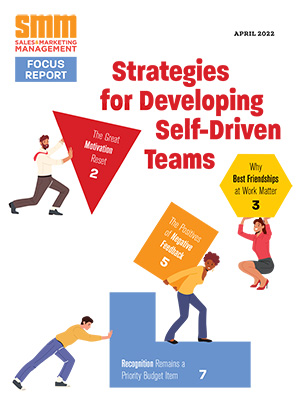

Dish Network sends thousands of technicians into the field every day to connect new customers and service existing ones. Seth Watson thought about all of those technicians hitting the streets when he joined the company in 2011 and imagined the possibilities if a sales element was added to the job.
And so was born Dish Smart Home Services, Dish Network’s lucrative venture into selling added-value services such as installation of home theaters, wireless networks, surround sound or simply mounting a TV on a wall or providing extra cables and screen cleaner.
“Actually, I try not to use the word ‘selling’ because we aren’t trying to drive the mentality of overcoming objections and that sort of thing,” Watson says. “We’re simply trying to delight the customer in a low-pressure situation.”
Call it what you will, Watson says by enlisting technicians to offer simple add-ons, Dish Network rang up $1.5 million in additional revenue in 2014, its fourth year of operating the program. A lot of companies would love to bring in those kinds of numbers from a sales effort that isn’t a sales effort.
Dish’s not-so-secret weapon
Watson credits a large part of the program’s success to an incentive program that Dish has used since launching the program in 2011. It partnered with BI WORLDWIDE to roll out a non-cash awards program that garnered 100 percent participation from its thousands of technicians nationwide.
“We expected getting people signed up for the program would be one of the biggest challenges, but we were able to accomplish it in 30 days,” Watson says.
The motivational power of incentives has been well documented over the years — in this publication as well as
many others. But a recent study co-sponsored by the Incentive Research Foundation (IRF) and the Incentive Marketing Association (IMA) reveals new insights that help explain why Dish Network’s program and thousands of others like it are so successful. In a survey of more than 450 individuals who had participated in incentive programs, as many as eight in 10 preferred a non-cash award to cash.
More importantly, the survey showed that for both large-scale and smaller reward programs, the total reward experience — who presents the award and how it is presented — is equally if not more important than the award itself. According to the survey, a whopping 52 percent of the effectiveness of a large award program (defined as something that is attained over a year or more) hinges upon who presents the reward, how it is communicated and whether or not professional development is attached to the award (see story on page 36).
“We’ve always known that award presentation is important. Now we know just how important it is,” says IRF President Melissa Van Dyke. “The award is half of the experience or more, but the other side of that is it is an experience, and what people prefer is much broader than just the award itself. If we’re going to create really rewarding experiences, we need
to be mindful of that.”
Peer power
Dish Network’s Watson says the company has always emphasized presenting awards publicly so top performers are recognized among their peers. “We absolutely believe in publicly rewarding,” he says. The value of non-cash awards, he points out, is that people are proud to receive them in public. Watson received a letter from one Dish Network technician who was traveling to Japan with a significant other using points he earned through the program.
“The beauty of that is he’s willing to tell me about it and he’s willing to tell others about it. When you get a $200 bonus, while it’s nice, you’re probably not going to tell everybody about it and you’re not going to get the overall experience that goes with that,” Watson says.
Are other users of non-cash incentives as tuned into the importance of presentation? “I don’t think it’s being done as effectively as it could be,” says Rick Low, vice president of special markets for Citizen Watch and the immediate past president of IMA. “Managers who deliver the rewards have never been taught the importance of how to deliver. And those that are designing the programs — the performance improvement companies — may not have stressed the importance.”
“Some companies are doing a good job of paying attention to the overall award experience, some are not,” adds Van Dyke. “Program sponsors must be mindful of educating managers on how to ask questions about what employees find rewarding. When we are cognizant of the importance of how people want to be recognized, the power of non-cash awards becomes much more evident and maps more readily to what people prefer.”



